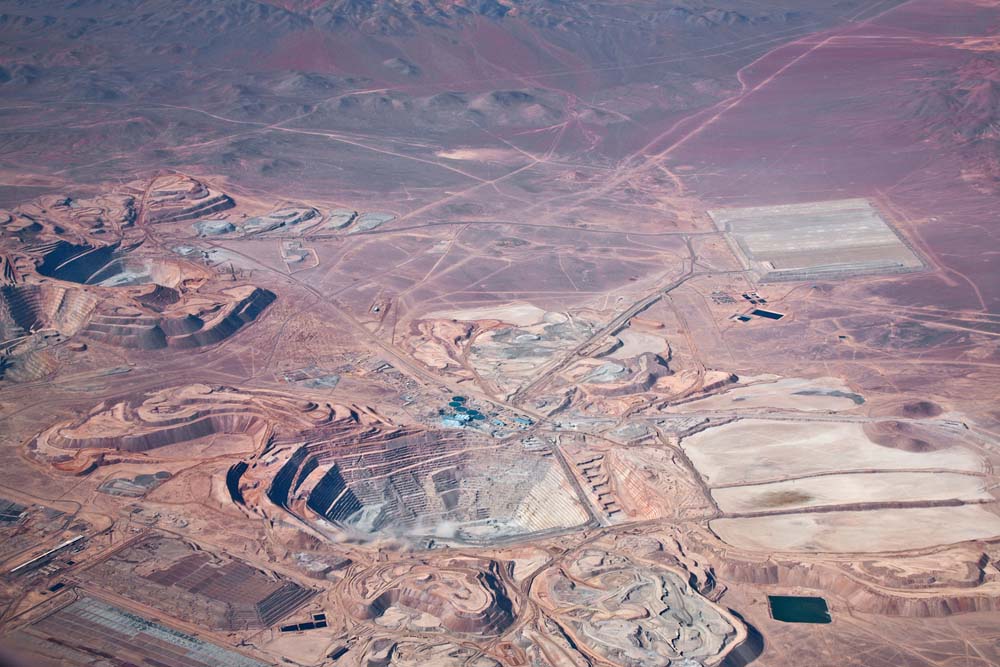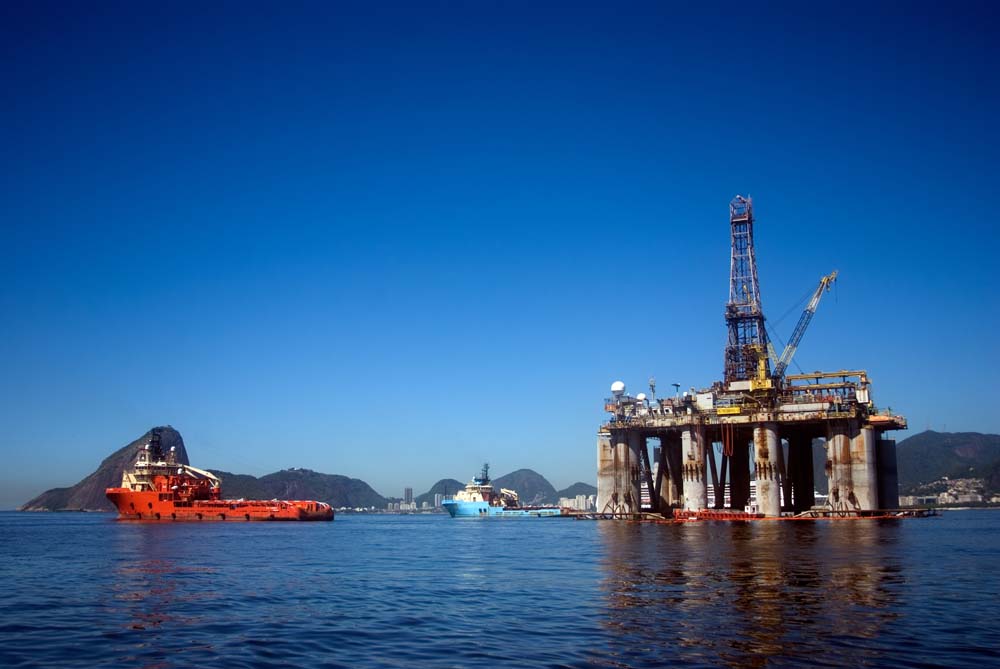Apr 04 | 2019
We come to the end of our cross-continent look at project cargo in the Americas with a trip to South America.
We’re dealing with similar issues in South America as we are in Central and North. Namely, several sectors, reliant on heavy-lift for their overall success, are coming out of a slump.
A new wind is breathing life back into South America’s project cargo lungs. We’re anticipating contract potential to pick up very soon. So why South America? Read on to find out.
Renewables may hold the key to a region-wide energy revolution. South American countries are mirroring their partners in Central America by turning towards sustainable energy sources to meet their heightened power-generation needs.
Wind holds enormous potential through South America.
Brazil has ambitious plans. According to a report from Renewable Energy World, 900 Brazilian wind projects have been registered with domestic authorities since 2015. In total, these represent an almost unbelievable 27 GW of wind power.
However, the 900 projects are unlikely to bear fruit until 2021. Government estimates suggest 15 GW of wind power will be added by 2026.
Argentina, Brazil’s largest neighbour, has a pipeline of projects delivering 3 GW in wind power underway. Overall, the share of renewable power in Argentina’s energy mix is on course to reach 20% by 2025. This has been helped by a focus on all green power sources, not just wind.
“We have over 120 windmill parks contracted,” explains Daniel Robinson, Director of Global Business Development at freight handlers Mercomar. “There are several solar energy parks high up in the Northwest provinces, and two major Hydroelectric projects are currently underway in Patagonia.”
It’s a similar story in Uruguay. In many ways, this country may be the Americas’ renewables champion. It’s second in the world, behind only Denmark, when it comes to wind power generation. As much as 40% of the nation’s energy derives from wind farms. So far, the country is close to becoming the first globally to enjoy 100% sustainable power generation.
So where does project cargo fit into all of this? More developments across the renewable spectrum are coming to South America very soon. It’s likely this will spur on a renewed round of component-carrying contracts.
For instance, a single wind turbine blade measures on average between 115-150ft, which should give some indication of the scale of freight requiring transport to project sites.
Enel Green Power, a regional renewable powerhouse, with plans to add additional turbines to its 132 MW Wayra I farm in Peru. It is also planning to build “South America’s largest wind farm”, a 716 MW complex, in Piaui, Northeastern Brazil, by 2021.
Spain’s Iberdrola has something big in store for Brazil too. Its in-development Paraiba wind far, generating as much as 565MW is about start construction with final product delivery by 2023.
The last few years have been less than kind to miners worldwide. Dropping commodity prices have made a dent in the liquidity and operational income of some major companies. As a result, mine expansion and construction projects were put on hold.
Fast forward to 2019 and the mining outlook is much healthier again. Certainly, miners are investing in expansion developments and new projects throughout the region.
A good case study of how mining can create contract demand is the Toromocho mine in Peru. Owned by Chinalco, the $3.5bn mine is one of the world’s largest copper producers. A $1.3bn upgrade is in the works, although relocation issues facing the local population have stalled current activity.
In 2016, US-based MIQ Logistics handled moving vital components to Toromocho, specifically ball mills destined for the on-site copper processing facility. This was no easy feat. The project site sits thousands of metres above sea level in the Andes, which required careful geographical and route analyses.
With construction of a flat-bed frame composed of 12 hydraulic models with unique axes, MIQ was able to move its payload through the Andes’ twisty mountain roads. As well as that, MIQ has had to build 25 lay-bys, reinforce 13 bridges, and construct further check points and tollgates.
A challenge to be sure, but one breakbulk specialists can meet using lessons learned by MIQ.
With that in mind, it’s worth looking at some mining developments ready to kick off throughout South America in the coming years.
Peru alone is a major investment hub for mining and mineral extraction. Some $21bn is expected to be pumped into new projects from now until 2021. A further $37bn is being prepped across dozens of other developments either in the preliminary or exploration phases. These include the $1.65bn Mina Justa copper deposit, located in Ica on the south coast, where work will commence in 2020.
Chilean state miner Codelco has its eyes on updating the world’s biggest underground copper mine, El Teniente near Santiago. This folds into a wider, 10-year, $39bn, program of fresh investment Codelco has planned.
While renewables are looking particularly healthy throughout the Americas, especially in the South, oil & gas is not far from the region’s energy mix.
A rebounding oil price in 2019, set to hit as high as $80 dollars per barrel, has lead to a reconfiguring of NOCs and Independents’ plans facing South America oil & gas.
The supermajors are circling. In partnership with local firms, the major companies are heading to South America with gusto, snatching up resource-rich blocks for future development. Shell, for instance, has secured 3 offshore blocks in Brazil, and another 2 in Colombia.
Indeed, Colombia has launched its first bidding round in over four years, with 18 onshore blocks available to potential bidders, as well as 2 blocks located in Colombia’s Caribbean acreages.
Ecuador, too, is opening up its oil & gas territories to foreign investment, seeking $1bn in potential revenues on its latest block auction.
The nation has been a hotbed of project cargo in recent times, with companies like stevedore Tradinter S.A handling rigs and pipeline parts to the Ecuador Pipeline project via Esmeraldas on the Pacific Coast.
Elsewhere, Brazil’s Petrobras has $84bn in oil & gas investments planned from now until 2023. Included under this program includes development of on and offshore fields, as well as construction of 19 new floating production, storage and offloading vessels (FPSOs).
Shale gas investment is being slightly scaled back throughout South America, but there is still a lot of project potential here.
“Argentina’s recently discovered Vava Muerta Reservoir is the second largest in gas, with proven reserves for 400 years and is the world’s fourth largest oil discover,” said Daniel Robinson.
It’s predicted that oil & gas in South America will remain healthy. Fluctuations in the worldwide oil price will affect investment levels, but for now, the sector is in a good place as of 2019.
Despite being a region in need of quality infrastructure, the Brumadinho dam collapse in Brazil may have applied the brakes to further infrastructure investment.
As a result of the damage and the tragic loss of life, regional investors are now taking a more considered, cautious approach across all stages of infrastructure development.
Before this disaster, the construction outlook was good. According to research firm KHL, construction was to show a CAGR of 2.4% across the 2020s.
While the long-term effects are yet to be seen, Brumadinho could potentially see a slowing in region-wide infrastructure investment across the next decade or so.
It’s not 100% confirmed, but it is worth carriers and freight forwarders keeping an eye on.
The above sectors are all reliant in someway on heavy-lift and breakbulk transport. With the possible exception of infrastructure, they represent high contract-generation potential for industry players throughout South America.
Breakbulk Americas is where the project cargo opportunities will be, as well as the region’s largest gathering of sector professionals. Don’t forget to register your interest in this event, and join the conversation for yourself in Houston, Texas, this year.
A new wind is breathing life back into South America’s project cargo lungs. We’re anticipating contract potential to pick up very soon. So why South America? Read on to find out.
Project cargo in South America
Renewables push ahead throughout Latin America

Renewables may hold the key to a region-wide energy revolution. South American countries are mirroring their partners in Central America by turning towards sustainable energy sources to meet their heightened power-generation needs.
Wind holds enormous potential through South America.
Brazil has ambitious plans. According to a report from Renewable Energy World, 900 Brazilian wind projects have been registered with domestic authorities since 2015. In total, these represent an almost unbelievable 27 GW of wind power.
However, the 900 projects are unlikely to bear fruit until 2021. Government estimates suggest 15 GW of wind power will be added by 2026.
Argentina, Brazil’s largest neighbour, has a pipeline of projects delivering 3 GW in wind power underway. Overall, the share of renewable power in Argentina’s energy mix is on course to reach 20% by 2025. This has been helped by a focus on all green power sources, not just wind.
“We have over 120 windmill parks contracted,” explains Daniel Robinson, Director of Global Business Development at freight handlers Mercomar. “There are several solar energy parks high up in the Northwest provinces, and two major Hydroelectric projects are currently underway in Patagonia.”
It’s a similar story in Uruguay. In many ways, this country may be the Americas’ renewables champion. It’s second in the world, behind only Denmark, when it comes to wind power generation. As much as 40% of the nation’s energy derives from wind farms. So far, the country is close to becoming the first globally to enjoy 100% sustainable power generation.
So where does project cargo fit into all of this? More developments across the renewable spectrum are coming to South America very soon. It’s likely this will spur on a renewed round of component-carrying contracts.
For instance, a single wind turbine blade measures on average between 115-150ft, which should give some indication of the scale of freight requiring transport to project sites.
Enel Green Power, a regional renewable powerhouse, with plans to add additional turbines to its 132 MW Wayra I farm in Peru. It is also planning to build “South America’s largest wind farm”, a 716 MW complex, in Piaui, Northeastern Brazil, by 2021.
Spain’s Iberdrola has something big in store for Brazil too. Its in-development Paraiba wind far, generating as much as 565MW is about start construction with final product delivery by 2023.
Mining complex enjoys optimistic outlook

The last few years have been less than kind to miners worldwide. Dropping commodity prices have made a dent in the liquidity and operational income of some major companies. As a result, mine expansion and construction projects were put on hold.
Fast forward to 2019 and the mining outlook is much healthier again. Certainly, miners are investing in expansion developments and new projects throughout the region.
A good case study of how mining can create contract demand is the Toromocho mine in Peru. Owned by Chinalco, the $3.5bn mine is one of the world’s largest copper producers. A $1.3bn upgrade is in the works, although relocation issues facing the local population have stalled current activity.
In 2016, US-based MIQ Logistics handled moving vital components to Toromocho, specifically ball mills destined for the on-site copper processing facility. This was no easy feat. The project site sits thousands of metres above sea level in the Andes, which required careful geographical and route analyses.
With construction of a flat-bed frame composed of 12 hydraulic models with unique axes, MIQ was able to move its payload through the Andes’ twisty mountain roads. As well as that, MIQ has had to build 25 lay-bys, reinforce 13 bridges, and construct further check points and tollgates.
A challenge to be sure, but one breakbulk specialists can meet using lessons learned by MIQ.
With that in mind, it’s worth looking at some mining developments ready to kick off throughout South America in the coming years.
Peru alone is a major investment hub for mining and mineral extraction. Some $21bn is expected to be pumped into new projects from now until 2021. A further $37bn is being prepped across dozens of other developments either in the preliminary or exploration phases. These include the $1.65bn Mina Justa copper deposit, located in Ica on the south coast, where work will commence in 2020.
Chilean state miner Codelco has its eyes on updating the world’s biggest underground copper mine, El Teniente near Santiago. This folds into a wider, 10-year, $39bn, program of fresh investment Codelco has planned.
Oil & Gas remains a key South American focus

While renewables are looking particularly healthy throughout the Americas, especially in the South, oil & gas is not far from the region’s energy mix.
A rebounding oil price in 2019, set to hit as high as $80 dollars per barrel, has lead to a reconfiguring of NOCs and Independents’ plans facing South America oil & gas.
The supermajors are circling. In partnership with local firms, the major companies are heading to South America with gusto, snatching up resource-rich blocks for future development. Shell, for instance, has secured 3 offshore blocks in Brazil, and another 2 in Colombia.
Indeed, Colombia has launched its first bidding round in over four years, with 18 onshore blocks available to potential bidders, as well as 2 blocks located in Colombia’s Caribbean acreages.
Ecuador, too, is opening up its oil & gas territories to foreign investment, seeking $1bn in potential revenues on its latest block auction.
The nation has been a hotbed of project cargo in recent times, with companies like stevedore Tradinter S.A handling rigs and pipeline parts to the Ecuador Pipeline project via Esmeraldas on the Pacific Coast.
Elsewhere, Brazil’s Petrobras has $84bn in oil & gas investments planned from now until 2023. Included under this program includes development of on and offshore fields, as well as construction of 19 new floating production, storage and offloading vessels (FPSOs).
Shale gas investment is being slightly scaled back throughout South America, but there is still a lot of project potential here.
“Argentina’s recently discovered Vava Muerta Reservoir is the second largest in gas, with proven reserves for 400 years and is the world’s fourth largest oil discover,” said Daniel Robinson.
It’s predicted that oil & gas in South America will remain healthy. Fluctuations in the worldwide oil price will affect investment levels, but for now, the sector is in a good place as of 2019.
Infrastructure outlook less bright

Despite being a region in need of quality infrastructure, the Brumadinho dam collapse in Brazil may have applied the brakes to further infrastructure investment.
As a result of the damage and the tragic loss of life, regional investors are now taking a more considered, cautious approach across all stages of infrastructure development.
Before this disaster, the construction outlook was good. According to research firm KHL, construction was to show a CAGR of 2.4% across the 2020s.
While the long-term effects are yet to be seen, Brumadinho could potentially see a slowing in region-wide infrastructure investment across the next decade or so.
It’s not 100% confirmed, but it is worth carriers and freight forwarders keeping an eye on.
A favorable project cargo outlook in South America
The above sectors are all reliant in someway on heavy-lift and breakbulk transport. With the possible exception of infrastructure, they represent high contract-generation potential for industry players throughout South America.
Breakbulk Americas is where the project cargo opportunities will be, as well as the region’s largest gathering of sector professionals. Don’t forget to register your interest in this event, and join the conversation for yourself in Houston, Texas, this year.





